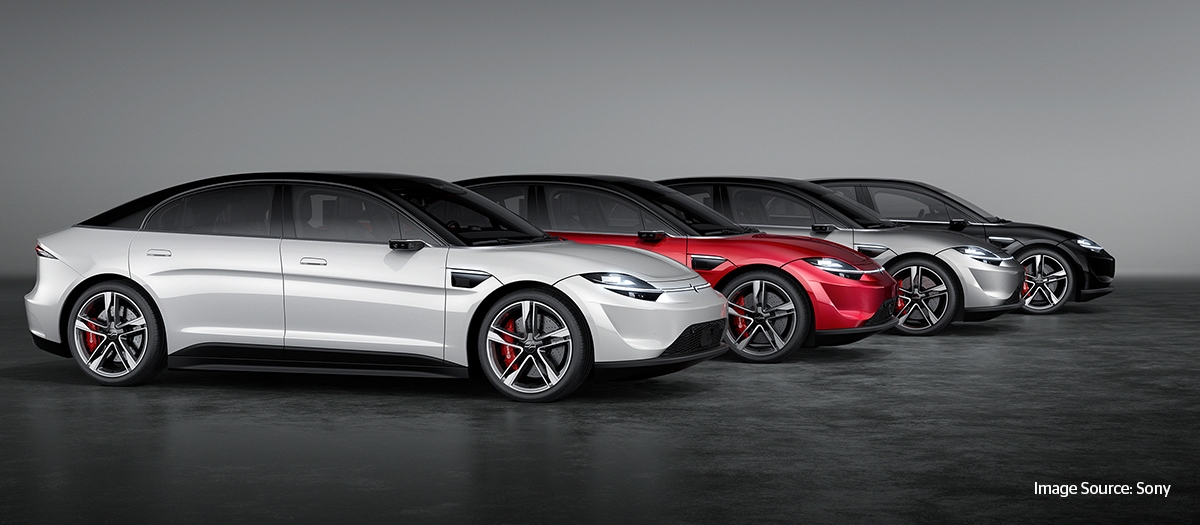Production and development service provider supports global corporation in prototype vehicle development.
As a consumer electronics manufacturer, Sony has for decades developed and marketed successful entertainment products that make people’s lives easier and more pleasant. With the VISION-S prototype vehicle presented at the Consumer Electronic Show in Las Vegas at the beginning of 2020, Sony is transferring many of its technologies to the automotive world, creating a completely new entertainment experience. It’s something for which the Japanese electronics manufacturer has received a lot of attention and plenty of positive feedback worldwide.
Right from the start, the manufacturer has been working alongside established suppliers such as Magna, Continental and Elektrobit – a key to success.
As a development and production service provider, we at Continental Engineering Services are particularly proud that we can make a contribution to this prestigious initiative. We have been supplying components from the Continental product portfolio, and also adding our extensive knowledge of integration and systems in the fields of brake systems, interior electronics, and electrical drive systems.
In VISION-S, Sony uses cloud-capable image sensor and telecommunications technologies to showcase its own capabilities in terms of safety, comfort and entertainment for mobility projects of all kinds.
Thanks to state-of-the-art sensor technology, the vehicle monitors its own vehicle interior just as closely as the vehicle’s immediate surroundings. In light of the movement towards highly automated driving, it can therefore enact safety measures much more thoroughly, carefully and quickly than humans. The vehicle will keep its software continuously up to date with over-the-air updates, using the fast 5G network standard. Equipped with state-of-the-art entertainment systems, the vehicle interior is increasingly becoming a kind of living room.

Customers like Sony benefit in particular from Continental platforms, which are also used in large-scale production, including hardware components, software algorithms, system development, test depth and evaluation criteria.
In addition, we demonstrated impressively short response times and a non-bureaucratic method of working.
This is another reason why the engineers involved, together with Sony’s VISION-S team, succeeded in carrying out the development work and tests for the prototype vehicle systems we are responsible for in a record-breaking time of just one year, and have already commenced the testing phase.

This meant the prototype vehicle, which is 4.895 meters long, 1.90 meters wide and 1.45 meters high, could be presented to the public in time for CES 2020. It is driven by two 200 kW electric motors on each axle. This accelerates the 2.3-metric-ton vehicle from a stand-still position to a speed of 100 in 4.8 seconds.
The particularly constructive and reliable collaboration with the customer in its own right makes the project special. For many of our colleagues in Frankfurt, Babenhausen, Nuremberg, Marktdorf and Ingolstadt, the unusual change of perspective was also a new experience. After all, depending on the service requested, they were classified either as Tier 1 or Tier 2 suppliers.
CES engineers are particularly impressed by the successful cooperation with the development partners involved – a crucial factor in the success of such a complex and demanding mobility project.

By loading the video, you agree to YouTube's privacy policy.
Learn more
By loading the video linked on YouTube, you agree to YouTubes’s privacy policy. Learn more





